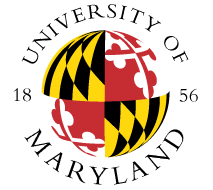Nucleic Acid Probes That Sense and Respond to Piconewton Force Enable New Insights and Applications in Mechanobiology
April 21, 2025 in PSC
On April 21st, in the Physical Science Complex, I attended a presentation by Khalid Salaita titled “Nucleic Acid Probes That Sense and Respond to Piconewton Force Enable New Insights and Applications in Mechanobiology.”
This presentation was thoroughly interesting to me as a bioengineering major. The presenter was very knowledgeable, excelled at presenting expressively, and very gracefully handled questions and critiques by the audience. The description of his research was framed like a narrative, making it easier to comprehend. For each section of his presentation, he started with a motivating research question.
The content of the presentation was far more in-depth than a college freshman could really appreciate but I was nonetheless intrigued all the way through.
Dr. Salaita started by discussing how molecular imaging in living cells has transformed our understanding of biology. He described Nobel prize winning discoveries such as that of a green fluorescent protein that can be used to visualize organic processes in real time or such as super resolved fluorescence microscopy that allows scientists to determine the chemical composition of an object being observed.
Dr. Salaita wanted to focus on imaging the locations and directions of microscopic biophysical forces in cells. This is because while there are plenty of models to describe how cells are impacted by certain processes, there aren’t any assays to measure the forces being exerted. This is largely because the scale of the forces is so small, and they are quick, infrequent, and spatially organized.
Dr. Salaita discussed how there are several techniques being developed by other researchers but he described them as trying to watch a soccer game through a straw. His approach was a probe made of polyethylene glycol that has phosfluorescent ends that produce light when stretched. He replaced the ligands with small peptides that bind to integrands. Because fluorescence is related to extension which is related to tension, the amount of fluorescence can signal the amount of tension which says the amount of force. The challenge with this approach was that single molecular forces are difficult to infer from an ensemble of probes. To counter this, Dr. Salaita used DNA tension probes to study platelet forces. The utility here is that after a study, researchers can tell a patient the force that their integrands generate in their platelets.
Dr. Salaita transitioned his focus toward the direction of the force because a force needs a magnitude and direction. He decided to measure the polarization of the probe to detect the direction the strand is facing and he detected the orientation of the organic dye. If the incoming light is aligned with the dipole moment, more light is projected, so all they had to do was rotate the laser to get all angles.
Dr. Salaita faced a setback when his attempt at superresolution failed miserably. He realized that one of his ideas was naive. He then described certain approaches in consideration. He explained to us that experimentation can be a reality check and that perseverance is one of the necessary qualities of a researcher. He explained that often, even when conclusions are drawn, research leaves scientists with questions rather than answers.


